Whether you want to decorate your beach house with stunning lights, install navigation lights on a yacht, or maybe want to start a wholesale business, knowing the basics about marine grade light is a must.
Unfortunately, there isn’t much information on marine-rated lights online that can help you make the right investment.
But don’t worry! We’ve compiled a complete guide to help you grasp the basics of marine-grade light and choose the perfect one for your project.
Let’s get started.
What Are Marine Grade Lights and How to Choose?
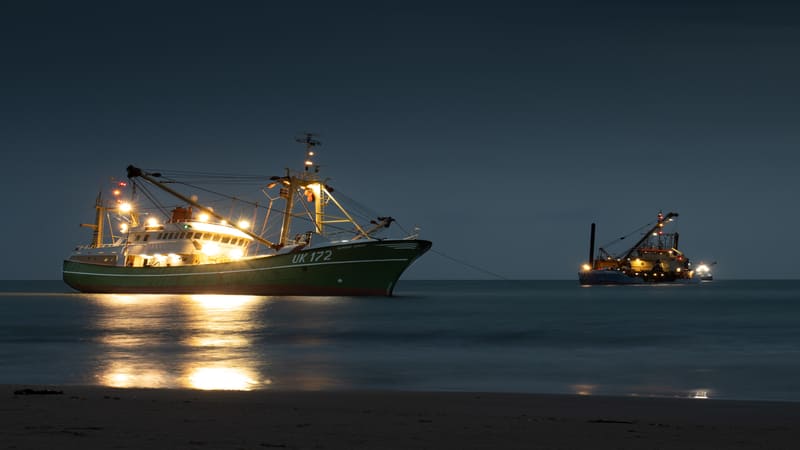
Marine-grade lights are special types of lights that are resistant to corrosion, rust, and damage due to harsh oceanic environments. Such an environment includes seawater exposure, heavy rainfalls, UV radiation, and intense humidity.
Marine-grade lights are robust fixtures that can withstand not only brutal seaside weather but can also work underwater.
Typically, they’re used for lighting houses and commercial areas on the seaside and in wet locations. They are also preferred on yachts, boats, ships, and even swimming pools.
These lights owe their robustness and durability to using unique marine-grade materials, sealing, and designs. And that’s the reason they are pricier than your typical lighting.
Marine-grade lighting comes in all shapes and sizes, and thankfully with the emergence of LED bulbs, we have more variety than ever.
Where to Install Marine Grade Lights?
People often get confused about how far away they should be from the coastline to avoid the harmful effects of the sea.
As a rule of thumb, if you are within 9 miles (15 km) of the sea, then you should install marine-grade lights. The major deciding factors are daily weather, chances of flooding, storms, and humidity levels.
Key Benefits of Marine-Grade Lights
Corrosion Resistance
Marine-grade lights are most resilient against rust and saltwater corrosion. The material used for manufacturing is also different from average lighting fixtures.
Tight Seals
Marine-grade lights have tighter seals and specialized gaskets that make it impossible for moisture to pass through.
Thermal Management
Marine-grade lights are also resilient against icy and hot thermal environments. The material doesn’t expand and contract with the outside temperature.
Energy Efficient
LED marine rate bulbs are more energy-efficient and durable than incandescent and halogen bulbs. Newer advancements in LEDs will make these lights even better.
Higher Quality Optics
Marine-grade lights designed to be used on ships have higher visibility. The lenses are clearer, and the material is resistant to impact and UV degradation.
Weatherproof Vs. Waterproof Vs. Marine Grade
Contrary to popular belief, there is a difference between weatherproof, waterproof, and marine grade ratings, even though they all pretty much define protection against water exposure.
Understanding the subtle difference will help you get the best lighting for your project.
Weatherproof Lights
Manufacturers may use this label when the lighting fixture is able to withstand harsh weather like strong wind, rain, and snow.
In most cases, National Electrical Manufacturers Association (NEMA) ratings define the durability of weatherproof lights.
However, these lights can’t be used for underwater purposes.
Waterproof Lights
Such lights also work in harsh stormy weather, but the key difference is that the fixtures won’t allow water and dust to penetrate.
Some waterproof lights can also be used for underwater applications like fountains and dock lights. In a sense, they are more robust and durable. Ingress Protection (IP) rating is used to categorize such lights.
Marine Grade Lights
Marine grade lights are a type of waterproof lights that are specifically designed for marine purposes. They are used in commercial and residential areas near the ocean prone to saltwater exposure. Moreover, they are used on boats, yachts, and ships.
Marine-rated lights resist impact, corrosion, and malfunction due to extreme weather. In simpler terms, they are the most robust light fixtures among all three categories.
Standards Used to Rate Marine-Grade Lights
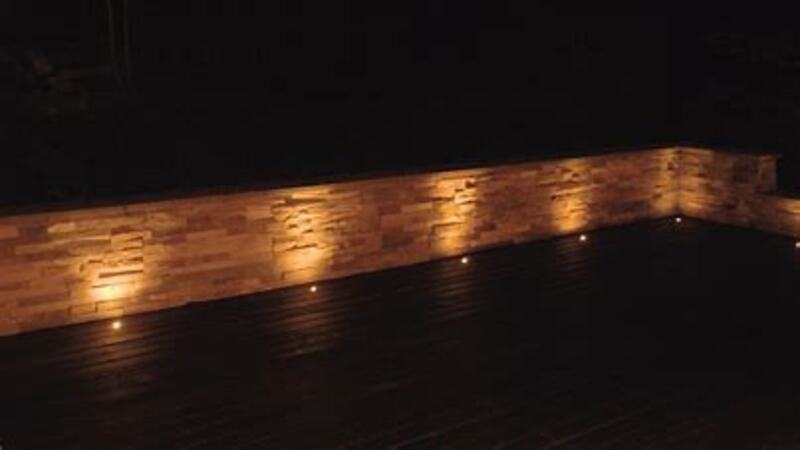
Here are the standards, certifications, and regulations that define the quality of a typical marine-grade light.
Ingress Protection (IP) Ratings
An IP rating is an international standard that rates protection against moisture, dust, and other outdoor factors.
Typically, marine-rated lights labeled IP68 or higher mean they are resilient against water immersion and dust ingress. They can withstand an underwater depth of 13 ft.
An IP rating is the most common standard to classify lighting fixtures. You can learn more about this system from our website.
United States Coast Guard (USCG) Approval
Marine-rated lights are commonly used in ships, boats, and yachts for navigation purposes. In America, such lamps are strictly regulated by USGS.
The rating is based on the fixtures’ brightness, color, and quality. So, if you are anywhere near US waters, then it’s best to purchase marine-grade lights approved by USCG.
International Electrotechnical Commission (IEC) Standards
Just like IP rating, the IEC standards also work worldwide. Though, it is a more general standard for electrical equipment, including lights.
Marine-grade lights commonly used in international waters are rated using the IEC rating system. They ensure the safety and performance of marine lights are up to par.
We’ve discussed in detail the IEC rating for LED lights in the previous blog.
Together with an IP rating, the IEC is the most common rating system used to classify marine-grade lighting worldwide.
National Marine Manufacturers Association (NMMA) Certification
NMMA is another US-based certification that sets quality standards for recreational boats and yachts. They also certify marine-grade lights and ensure the luminaires are of the highest quality.
NMMA has specific criteria to rate the safety and performance of lights under the rigors of marine environments. This certification is only for marine-grade lights that are used in ships, yachts, and boats.
UL Listing
Underwriters Laboratories (UL) is a third-party testing group that certifies all electrical equipment, including lighting fixtures. It’s highly reputed in the USA, and the products in the UL listing are assumed to be of higher quality. Outdoor marine-grade lights for coastal homes are certified by UL.
Bonus fact: Having UL-listed electrical appliances in your house makes insurance claims easier in case of accidental electrical fires.
Materials Used in Marine Grade Lighting
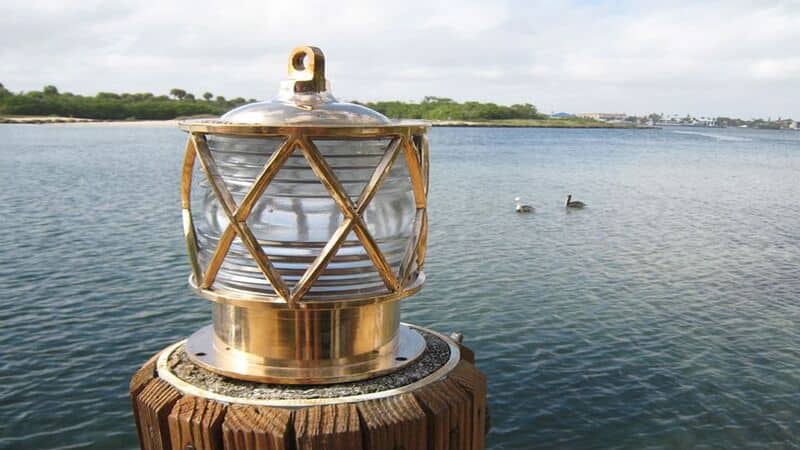
When it comes to marine-rated light fixtures, there are several different materials to choose from.
Stainless Steel
The most obvious one is stainless steel for marine-grade lights, as it’s naturally resistant to corrosion, rust, and deterioration. Moreover, saltwater and other mineral-riddled water have the least effect on its surface.
The most common steel grade that you may find on the market are:
316 Grade
Highly resistant to saltwater and have superior physical characteristics to all other stainless steel types. All thanks to extra molybdenum, which enhances its properties.
304 Grade
Type 304 stainless steel is suitable for marine weather but less resilient than type 316. It’s also cheaper, which makes it a preferred choice for indoor and outdoor lighting.
321 Grade
It’s less commonly used than the 304 and 316, but nonetheless, its trace of titanium makes it highly corrosion-resistant.
904 L Grade
Type 904 L stainless steel is mostly used for demanding oceanic environments like offshore oil rigs or underwater applications. It’s highly resistant to saltwater.
Aluminum
Marine-grade aluminum light is lightweight yet strong enough to withstand harsh weather. When exposed to air and water, it quickly forms a layer of aluminum oxide which stops the corrosion.
Bronze
Bronze has a classy and vintage look that works great for home lighting. Marine-grade bronze fixtures come in a variety of shapes and designs.
Polycarbonate
It’s an advanced marine-grade plastic that is resistant to most environmental factors. Polycarbonate does well against UV degradation, which usually causes colors to fade.
Glass
Marine-grade lights often use glass lenses and covers that are resilient against scratches and UV rays. However, they are more prone to impact damage.
Types of Marine-Grade Lights
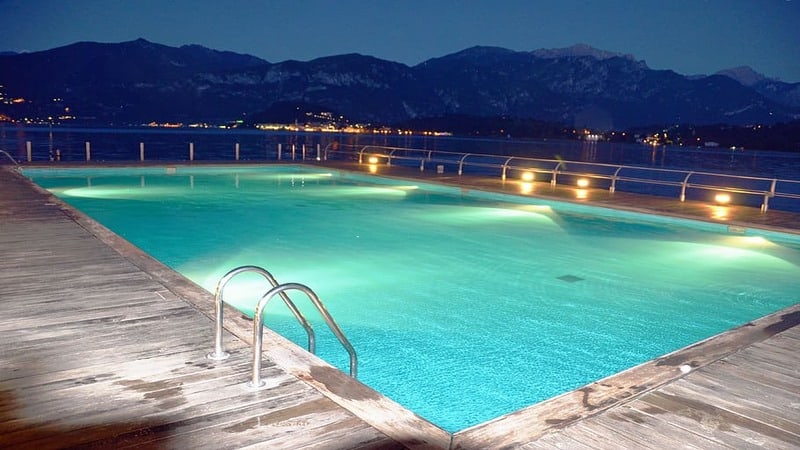
Marine-rated lights have used various lighting technologies over the years. Incandescent, halogen, and xenon bulbs were common, but recently LED bulbs are becoming more popular.
Here are some common types of marine-grade lighting fixtures.
Floodlights
Marine-grade LED floodlights are used for general lighting and navigation. These are less focused but have a wide beam spread.
Spotlights
LED spotlights are more intense and task-specific. You will find it in boats or fountains to highlight a certain thing.
Dock Lights
Marine-grade lights are excellent for lighting the dock and wooden piers. They can withstand the harshest of weather and splashes of salt water.
Underwater Lights
You can use waterproof lights for fountains. The surface-mounted pool lights are the perfect example of this.
If your project involves underwater application in the sea, then the marine grade is your best bet.
Navigation Lights
Marine-grade lights are specifically used on boats and ships for navigation. It’s a no-brainer that lights on ships are exposed to harsh environments.
Post Lights
Marine grade post lights are an excellent choice for bridges and roads along the side of a water body.
Wall Lights
For indoor and outdoor beach houses and commercial shops, marine-grade wall lights are a preferable choice. They are available in a variety of designs.
Sure, they may be expensive, but their longer life makes up for it.
Camping Lights
Camping and hiking are fun outdoor activities where marine-grade lights can be beneficial. Typical examples are headlamps, flashlights, lanterns, and emergency lights.
Maintenance of Marine Grade Lighting
Marine-grade lighting is robust light fixtures that can withstand the harshest climates. If maintained properly, they can last 10 to 25 years. But that doesn’t mean they require any maintenance.
Here are some tips to increase the lifespan of lighting fixtures.
Cleaning
Regular cleaning will prevent salt, dust, and moisture from accumulating on the surface. You can use dilute detergent solution or freshwater with a sponge to remove all the gunk.
Monitor Corrosion
Corrosion is a natural process, and there is a limit to which it can be prevented. Regularly inspect the lamps for any damage. As soon as corrosion occurs, use rust inhibitors or preventive coating to protect the fixture from further damage.
Damaged Parts
Marine-rated lighting fixtures can still work with damaged parts. However, to prolong their life immediately, replace the damaged parts like casing, wiring, lenses, and connectors with new ones.
Regular Testing
This is a no-brainer that you have to test the lights regularly. If you notice any problem with brightness, color, or flicker, it’s time to take action. See the troubleshooting section for the tips.
Schedule Maintenance
Marine-grade light companies most likely offer maintenance services as well. Schedule such visits to have your lighting fixtures inspected and cared for.
Troubleshoot Marine Grade Lights
Things don’t always go as planned, and the same goes for your marine-graded lights that may suddenly stop working. Try these tips to troubleshoot your lights.
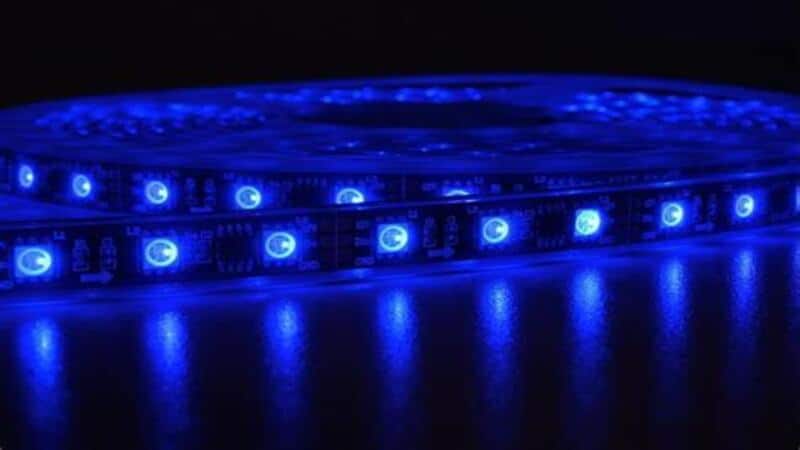
Check the Source
Check whether the lamp is connected properly to a power source or not. Also, look at the circuit board for any tripped fuse or circuit breaker.
Inspect the Fixture
Look for visible damage. If the casing is broken, then order the replacement part online.
Observe the Wiring
If the lights are dim or flickering, check if the wires are connected properly.
Clean the Lens
If the brightness is lower than usual, try to clear the lens of debris, corrosion, and dust.
Check the Sealant
Sometimes water vapor starts to accumulate inside the fixture. It may be due to the defective seal. Replace it with a new one and tighten it.
Replace the Bulb
If all else fails, try replacing the fused bulb.
Contact the Manufacturer
As a last resort, contact the manufacturer if you fail to troubleshoot the bulb.
Safety Precautions for Marine-Grade Lights
Safety Standards
Only use marine-grade lights that are certified and adhere to safety standards. Popular product quality standards to keep in mind are IP ratings, IEC ratings, UL listing, and USCG approvals.
Proper Installation
Proper installation is key to prolonging the life and safety of the luminaire. Hire a licensed electrician to avoid any mishaps. Always turn off the source supply before installation.
High-Quality Wiring
Saving money on cheap quality wiring can be disastrous later on. It can also start electrical fires. So, always invest in high-quality wiring.
Regular Inspection
Since marine-grade lights are always at the mercy of harsh weather, it’s a good practice to look for any signs of corrosion and rust early on.
Marine Life
Marine-rated lights are used around the ocean, which means they can affect the local ecosystem. Always consult marine life experts before installing lights to protect the environment from unnecessary light pollution.
Local Legislations
Make sure you are aware of the local legislation about high-intensity marine-grade light.
Limitation of Marine Grade Lights
Marine grade lights are awesome, there is no doubt about it, but there are certain limitations you have to face when buying such lights. Knowing them will help you in the long run.
Cost
Marine-grade lights are costlier because intricate designs and high-level sealing techniques are needed to make them resilient against harsh environments. Even though indoor and outdoor marine lights are expensive, they last two times more than ordinary light fixtures in oceanic weather.
Availability
As we’ve discussed above, the marine grade lighting needs to be certified and high quality for them to be useful. This makes the availability difficult depending on where you live. Thankfully, online stores and fast shipping have made it easier to buy marine-rated lights.
Intricate Installation
Marine-grade lights have a slightly higher cost due to their complex design. It’s to hire a professional if you are not that handy with tools.
Compatibility
If you are away from the coastline and your whole house isn’t on a marine-rated lighting system already, you may face compatibility issues. This can result in poor integration.
Routine Maintenance
Marine-grade lights, especially critical ones like ship navigation lights, need regular maintenance.
Final Thoughts
Marine-grade lighting is a good investment for beachside lighting projects. And compulsory for use in boats, yachts, and ships. We’ve discussed the advantages of such lights and how you can choose the best lights based on certifications, types, and requirements.
You can purchase quality lights that fit your budget by scheduling regular maintenance and considering certain limitations related to the marine-rated luminaire mentioned above. Popular brands for marine-grade fixtures are the Visual comfort studio collection, Generation lighting reg, Hinkley Lighting, and Quoizel Lighting.
Still confused about where to find high-quality LED marine-rated lights?
RC Lighting Is Your One-Stop Shop for Marine Grade Lighting
For over 20 years, RC Lighting has provided premium quality LED fixtures to our customers globally.
Our products comply with the highest international standards like ISO and IP ratings, thanks to our high-tech manufacturing facility and certified technical staff.
We specialize in marine-grade LED floodlights, spotlights, underwater, fountain, and general indoor and outdoor wall lights.
You’ll also get to customize your orders according to your project needs. Our comparative prices and low MOQ suits most businesses.
So, what are you waiting for? Try out our FREE project evaluation. Contact us now!



